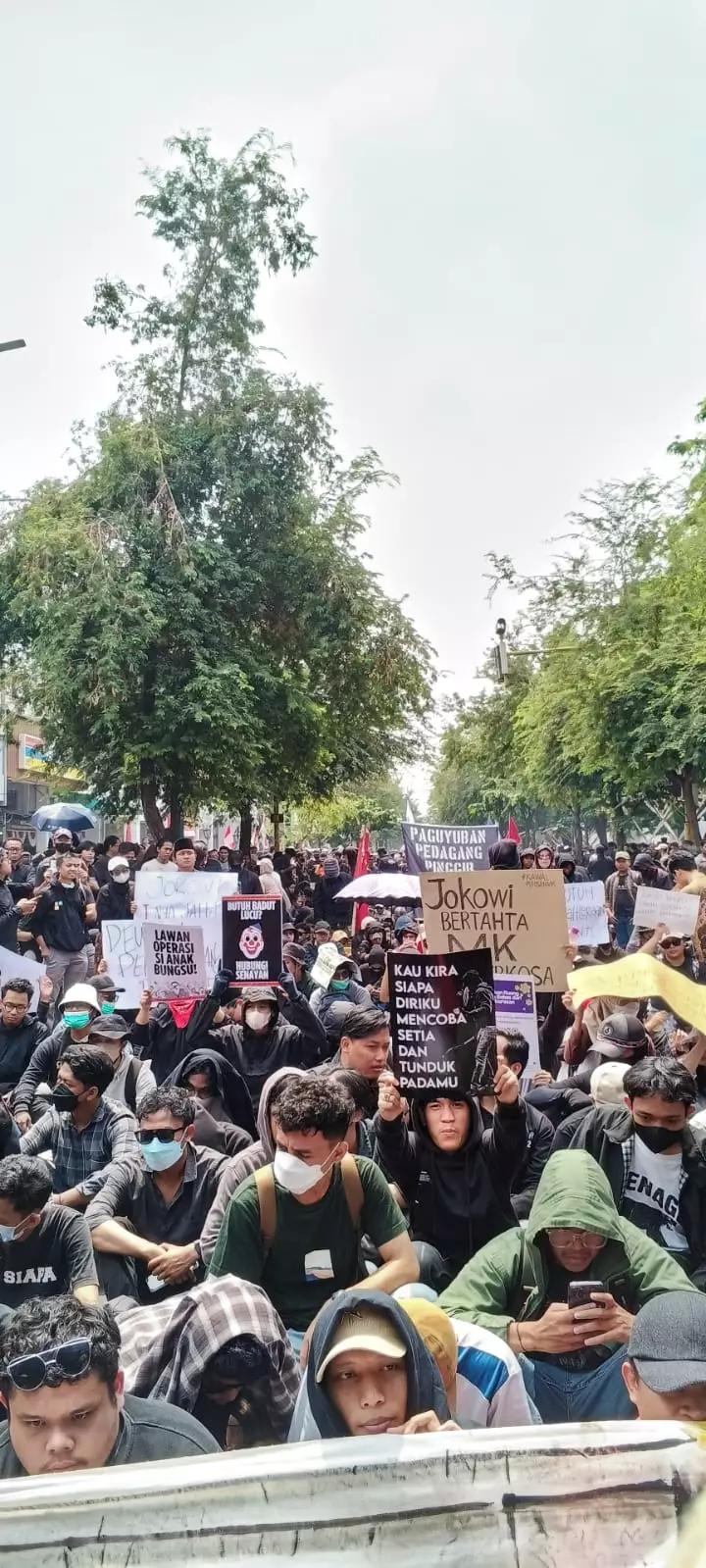Brilio.net - Lately, you must have often seen news about people taking to the streets to voice their opinions. One of the hottest was the reaction to the DPR's action to annul the Constitutional Court's decision regarding the 2024 Pilkada regulations. Various groups, from students to workers, took part in this movement to convey their aspirations.
For those of you who are still young and are taking to the streets for the first time, you may be confused by the terms that are often used. Demonstrations, protests, and mass actions - what's the difference? At first glance, these three terms sound similar and are often used interchangeably. But did you know that there are actually differences between the three?
It is important for you to understand these differences, especially if you are planning to participate in such activities. This knowledge will not only help you understand the context of the situation better, but also ensure that you can participate safely and responsibly. Summarized by brilio.net from various sources, Thursday (22/8), let's discuss one by one the differences between demonstrations, protests, and mass actions, as well as their history in Indonesia .
The difference between the terms demonstration, protest and mass action.

photo: liputan6.com
Demonstration, or often abbreviated as demo, is the most commonly used term. According to the Great Dictionary of the Indonesian Language (KBBI), a demonstration is defined as "a mass protest statement". Demonstrations usually involve a group of people gathering in a public place to convey their opinions or demands to authorities or the general public.
Demonstration is a direct translation of the English term "protest", which focuses more on the act of showing disagreement or dissatisfaction with a particular policy or action. This term is often used by the mass media to describe protests carried out peacefully, such as gathering in a place to convey aspirations. The main difference between a demonstration and a rally lies in the intensity and scale of the action. Demonstrations are usually smaller and do not always involve large mass movements, but rather emphasize the delivery of messages symbolically.
Mass action is a more general term that can encompass various forms of public protest or resistance. It is often used by activists to describe situations in which large numbers of people gather to demonstrate their power or pressure a particular party to meet their demands. Mass action can take the form of demonstrations, rallies, or other activities such as carnivals, parades, musical stages, or theater that involve broad participation from the public. Mass action often occurs in times of crisis or when the issue at hand is so important to the wider community that they feel the need to take to the streets to express their opinions.
History of mass action in Indonesia.

photo: brilio/Ikhlas Alfaridzi
The history of mass action in Indonesia can be traced back to the colonial era, when the Indonesian people began to voice their opposition to Dutch colonialism. In the early 20th century, mass actions were often organized by nationalist movements such as Sarekat Islam and Budi Utomo. Demonstrations during this period aimed to demand political and social rights, as well as independence from colonialism. One of the largest mass actions at that time was the anti-colonial demonstration that took place in 1926, which later became one of the important milestones in the history of the Indonesian independence movement.
During the Old Order era, mass action became the main tool for President Sukarno to mobilize the masses in supporting his policies, especially in foreign policy and economics. The famous mass action during this period was the "Crush Malaysia" action in 1963, where thousands of Indonesians took to the streets to oppose the formation of the Malaysian Federation. This action shows how mass action was used as a powerful political mobilization tool by the government.
The reform era that began in the late 1990s was marked by massive mass action that eventually toppled the New Order regime led by President Soeharto. The student demonstrations that began in 1998 were one of the most significant examples of mass action in Indonesia, where thousands of students from various universities in Indonesia took to the streets to demand political, economic, and legal reforms. This action finally succeeded in forcing Soeharto to resign on May 21, 1998, marking the end of the New Order and the beginning of the Reformation era in Indonesia.
After the Reformation era, mass action remains an important part of political dynamics in Indonesia. These actions are often related to social, political, and economic issues, such as demonstrations rejecting the increase in fuel prices or protests against laws that are considered detrimental to the people. One example of a famous post-reformation mass action is the demonstration against the Job Creation Law in 2020, where thousands of people took to the streets to demand the revocation of the law which was considered detrimental to laborers and workers.
In recent years, mass action in Indonesia has evolved with the help of technology and social media. Technology allows mass mobilization to be faster and more efficient, and expands the reach of protest messages. An example is the "Save KPK" movement in 2015, where social media was used effectively to rally support and organize mass action in order to support the Corruption Eradication Commission (KPK) against attempts to weaken it by certain parties. Mass action organized with the help of technology shows how the method of protest in Indonesia has evolved.
(brl/wen)